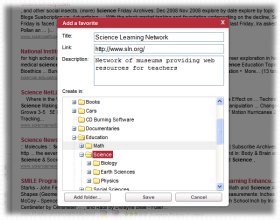|
Education
Web
Viewing 1-2 of 2 total results
for History PO 1. Use the following to interpret historical data: a. timelines – B.C.E. and B.C.; C.E. and A.D. b. graphs, tables, charts, and maps PO 2. Construct timelines of the historical era being studied (e.g., presidents/ world leaders, key events, people). PO 3. Descr...
1
0
for History PO 1. Use the following to interpret historical data: a. timelines – B.C.E. and B.C.; C.E. and A.D. b. graphs, tables, charts, and maps PO 2. Construct timelines of the historical era being studied (e.g., presidents/ world leaders, key events, people). PO 3. Describe the difference between primary and secondary sources. PO 4. Locate information using both primary and secondary sources. PO 5. Describe how archaeological research adds to our understanding of the past
75
0
http://www.ade.state.az.us/standards/sstudies/articulated/SSStandard-full-05-22-06.pdf#page=75
www.ade.state.az.us/standards/sstudies/articulated/SSStandard-full-05-22-...
<span class="highlight">for</span> History PO 1. Use the following to interpret historical data: a. timelines – B.C.E. and B.C.; C.E. and A.D. b. graphs, tables, charts, and <span class="highlight">maps</span> PO 2. Construct timelines of the historical era being studied (e.g., presidents/ world leaders, key events, people). PO 3. Describe the difference between primary and secondary sources. PO 4. Locate information using both primary and secondary sources. PO 5. Describe how archaeological research adds to our understanding of the past
place for the development of students' reasoning, higher thinking, and justification skills culminating in work with proofs. Geometric modeling and spatial reasoning offer ways to interpret and describe physical environments and can be important tools in problem solving. Students use geometr...
1
0
place for the development of students' reasoning, higher thinking, and justification skills culminating in work with proofs. Geometric modeling and spatial reasoning offer ways to interpret and describe physical environments and can be important tools in problem solving. Students use geometric methods, properties and relationships, transformations, and coordinate geometry as a means to recognize, draw, describe, connect, analyze, and measure shapes and representations in the physical world. Measurement is
33
0
http://www.ade.state.az.us/standards/math/Articulated08/Gradeleveldocs/MathGradeCWR.pdf#page=33
www.ade.state.az.us/standards/math/Articulated08/Gradeleveldocs/MathGrade...
place <span class="highlight">for</span> the development of students' reasoning, higher thinking, and justification skills culminating in work with proofs. Geometric modeling and spatial reasoning offer ways to interpret and describe physical environments and can be important tools in problem solving. Students use geometric methods, properties and relationships, transformations, and coordinate geometry as a means to recognize, draw, describe, connect, analyze, and measure shapes and representations in the physical world. Measurement is
|
